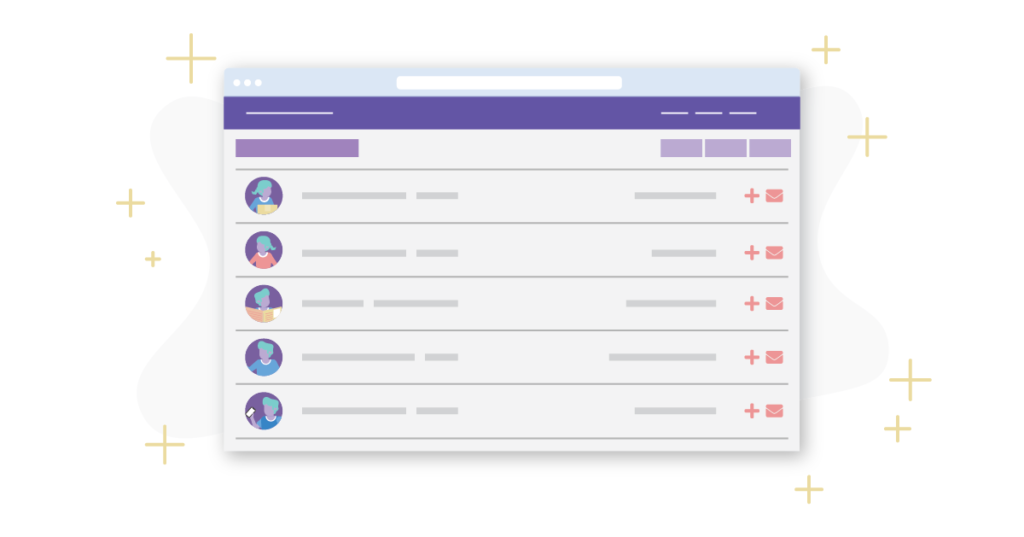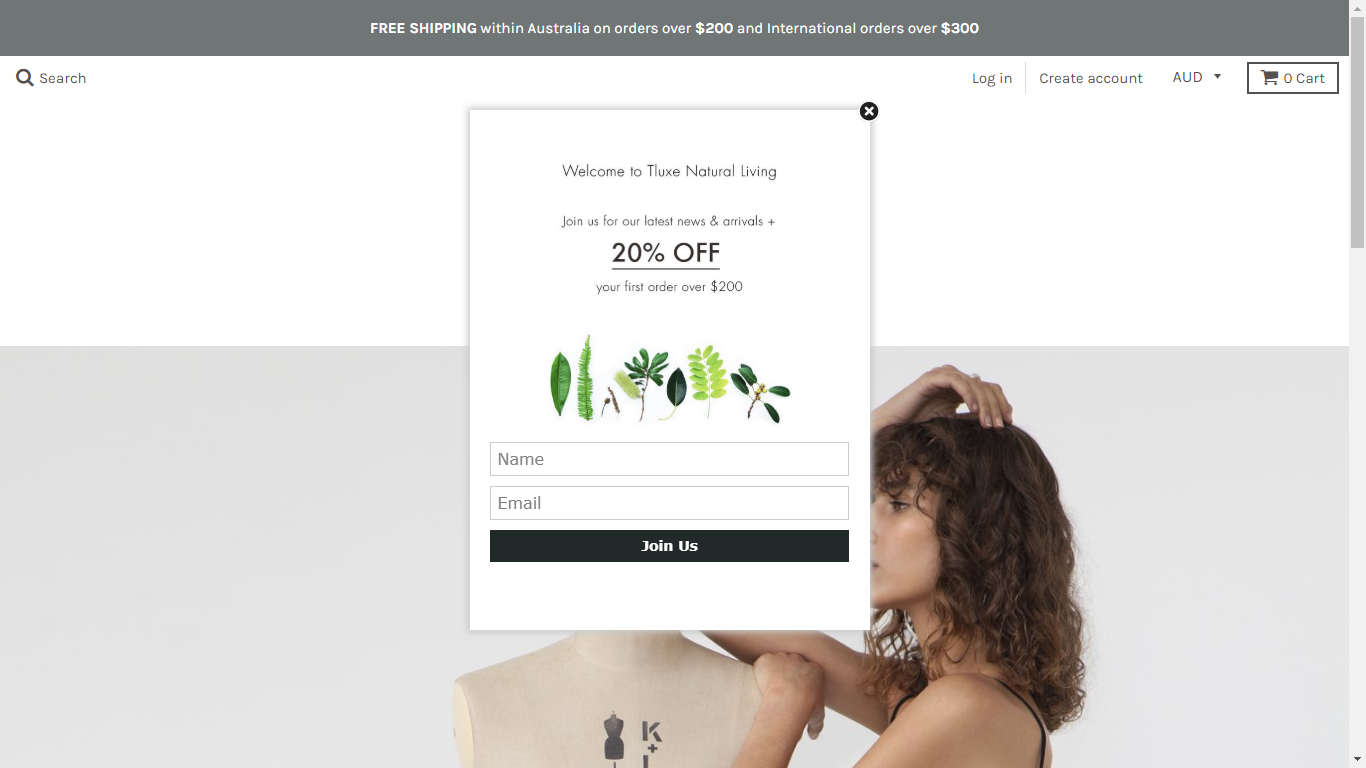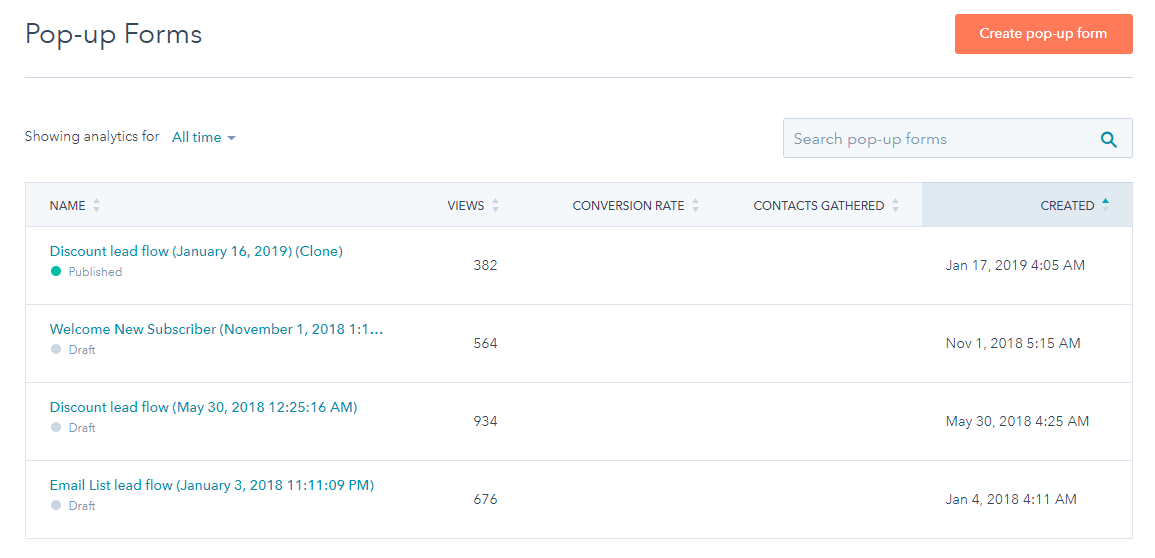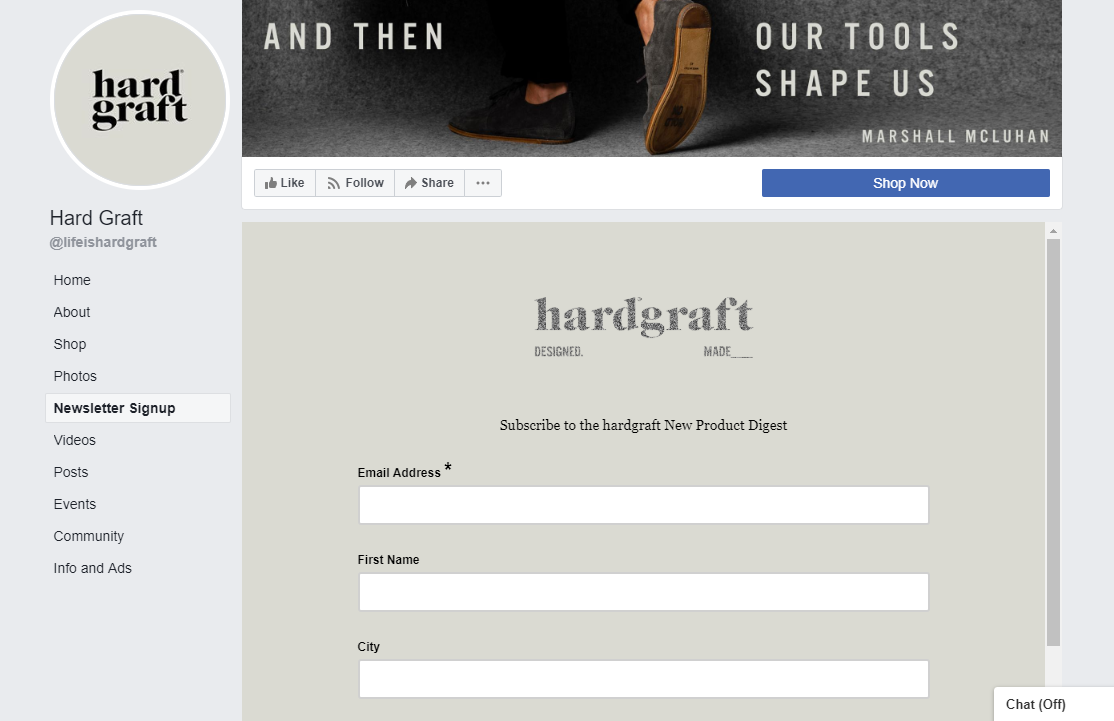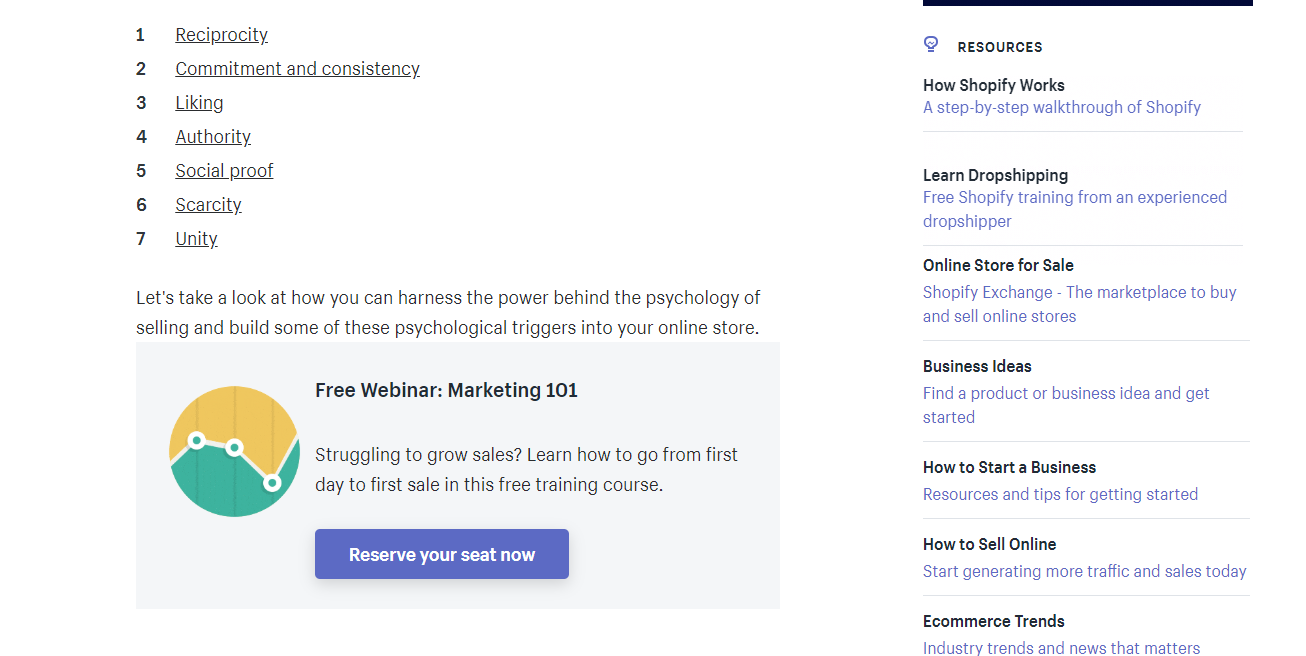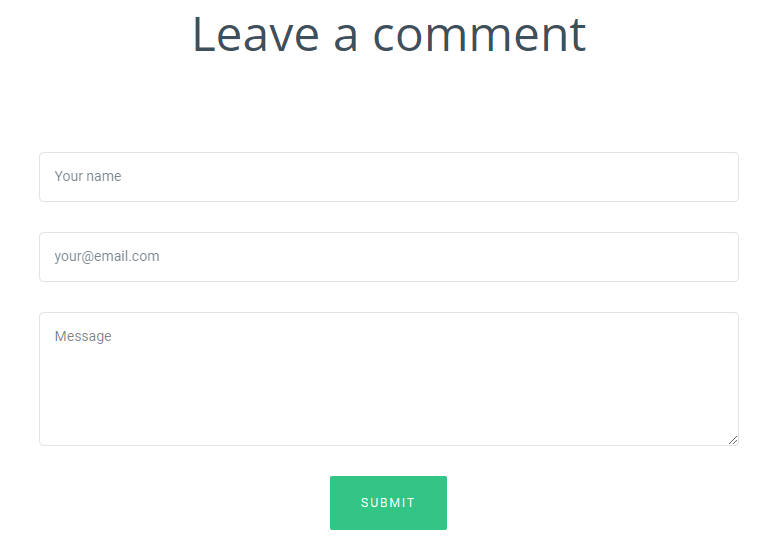Ecommerce is the go-to shopping experience more customers turn to. In fact, estimates show that 2.14 billion people across the globe will buy products online by 2021—compared to 1.66 billion in 2016.
As a result of all this ecommerce traffic, it’s easy to capture email addresses from online shoppers. However, there’s one drawback. Based on purchases made in Q2 2018, an average of 2.86% of the people who visit your website follow through and buy anything. Needless to say, this low conversion rate means you’re missing out on potential sales and email capture.
On the bright side, now’s a good time to find new ways to attract and nurture leads who aren’t quite ready to buy something.
Here are six ways to capture email addresses without waiting for people who visit your online store to buy something first.
1. Offer a lead magnet
You see them everywhere these days. Lead magnets are popups that appear when people land on your website. They’re a great way to highlight special offers and introduce new content to attract leads, provide value, and capture email addresses.
Lead magnets have to offer something in exchange for an email address, so what you offer depends on your audience and their pain point. For example, if you sell clothing and accessories online and your audience feels some of your products are priced too high, offer a discount code as an incentive. Or if you sell meal kit subscriptions online and your audience wants to learn more about eating right, offer an intro to a nutrition eBook.
Whatever type of incentive you choose, your lead magnet has to be something your audience has an immediate need for. This way, they’re more willing to share their email address in exchange for your perks.
Tip: Use a tool like HubSpot that lets you decide what lead magnet format to use, how often it shows up, and when it should appear—for example, after visitors spend a few seconds on a page, when visitors scroll down a certain percentage, or when visitors try to close the page.
HubSpot also lets you test different variations of your lead magnet, so you can track how many times they’re viewed and how many times an email is submitted.
2. Create a landing page
The main purpose of a landing page is to capture email addresses. Unlike other pages on your store that are general, like your homepage or product pages, landing pages are specific and focus on one main message. Using the eBook example again, the landing page should only talk about what’s included in the eBook and the benefits of downloading it. Don’t clutter the page with information about your products.
You can steer potential customers to your landing page a few ways. For example, you can run an ad on Facebook and re-direct followers to the landing page when they click on the ad. Or better yet, you can add a newsletter signup landing page to Facebook, so you can capture the emails of followers browsing your social media posts.
Note: Your landing pages should reinforce the promises made in your ads or promos so that your message has continuity.
Landing pages typically include three fields:
- A heading
- An offer summary—this explains what leads get when they submit their email address
- A call to action (CTA)
Tip: Similar to lead magnets, offer an incentive your audience will be receptive to in return for their email address. For example, if you run a seasonal offer on Facebook, your landing page can include a discount on overstocked inventory you need to get rid of. This way, leads have the option to buy products they’ll need next season at deep discount prices.
3. Ask on social networks
There are billions of users on social media scrolling through content every minute of the day. Since 88% of people research their purchases before buying, chances are a good number of these users are looking for specific product information before they buy.
One way to run your email capture campaign is to use your social networks to get followers engaged. For example, if a large percent of your customers spend time on Facebook, post an update about some of the new products you offer or a new feature or process you’ve just launched. To get email addresses, offer to send more detailed information to anyone who asks for it in the comments.
When followers respond, send them a direct message with a link to the appropriate landing page.
This approach has several benefits:
- You encourage followers to interact with you instead of waiting for them to reach out first.
- New followers who find your social media profiles will see all of the engagement you’re getting. This acts as social proof that reinforces that you’re a brand to consider. Showing lots of engagement is especially handy for leads in the research stage of their customer journey.
- You generate leads that are interested in what you have to offer. They might be further along their customer journey—for example, in the consideration stage—and are more likely to buy something from you than cold leads.
- This encourages people to share the post on their social pages as well. If there’s lots of engagement, it has to be worth sharing, right?
Tip: Responding to each and every comment might be tedious, but it’s worth it since the engagement helps your email capture efforts. To optimize your time, only run this type of campaign once or twice a month. This way, you’re not just focused on email capture but also nurturing your new leads and building relationships.
4. Add CTAs to blog posts
According to Bill Widmer, a content and SEO expert, we’re going to see more online stores turn to content to help grow their business. He says, “To rank, you need backlinks and you need to match the user’s search intent. If someone is searching for the best white shoes for their wedding, product pages won’t rank for that – articles will.”
Using content to sell products is a genius move since retailers can use search engine optimization (SEO) to build their online presence. Based on the keywords you use—depending on your niche and products offered—you can naturally attract people to your website when they search Google.
Plus, a blog helps you position yourself as a trusted adviser and a source of valuable industry information. Remember, people love to research online, so the easier it is for you to be found and the more information you can provide, the better.
If you’re a retailer with a blog, use it to expand your email capture campaign. Include CTA blocks throughout each article you post so that as people read your content, they can also subscribe to your email list.
Since these CTA blocks are embedded in your content, you don’t have to add a lot of information to them. The main thing is to include a sentence about the value your email list offers and a button that displays an email capture field in the block when clicked. You can take leads to a landing page, but it’s a better idea to keep them on the blog vs. asking them to leave the page and risk them not finishing the article.
Another option is to capture emails when readers leave a comment:
Or add a subscribe option in the footer of the page:
Tip: If you’re in tune with what your audience needs, create content that speaks to this. This way, as people read through the article and find value, they’ll be more eager to sign up for your email list so that they can be the first to hear about new posts. Also, include at least two CTA blocks in your blog content. This way, there’s more than one invite to join your email list, and readers don’t have to scroll back up to the top to find a link.
5. Add a request to email signatures
Use your email signature to promote your email list. You and your team likely have lots of contact with people who aren’t on your mailing list. This might be vendors you work with, people sending general questions to you, or even people you’ve networked with in the past. It’s worth adding them to your email list because even if they don’t buy your products, they might know someone else who will.
The link you share can take people to a landing page dedicated to your newsletter. Or to a landing page with a limited-time offer.
Tip: Your email signature is also a great place to get creative. Let’s say you include a fun quote or a seasonal reminder within your signature; change it every few months as a way to find new means to attract new leads.
6. Create a limited-time special offer
According to Robert Cialdini, there are seven psychological principles of selling: reciprocity, commitment and consistency, liking, authority, social proof, scarcity, and unity.
When it comes to getting shoppers to convert and buy, the scarcity principle says that “people are motivated by the thought that they might miss out on an opportunity. Call it the Eternal Teenager Principle: If someone tells you that you can’t have it, you may want it even more.”
Use the scarcity principle to help increase email capture. You can encourage people to buy immediately and take advantage of the special offer—in which case, you’ll get their email address when they buy something—or you can offer to keep leads updated on similar offers if they sign up for your email list.
Tip: This tactic works for leads who’ve spent time on your site and need an urgent request to get them to share their email address. You can also promote your limited-time offer on social media as a way to get more traffic to your site and capture more emails. When leads click to your landing page, in addition to offer details, include a few testimonials from customers who value your products and email list. This also creates the social proof that some leads need to take action.
Making email capture work for you
As you can see, there are lots of ways to capture emails beyond waiting for someone to buy something. Use your email capture efforts to get people excited about the products and value you offer, so you have a chance to nurture and convert them. The easiest place to start is to add a lead magnet to your website. Experiment with the offers you share, and use the data to figure out what your audience responds to the best.
From there, branch out to other email capture tactics until you find the mix of strategies that help you grow your email list.
There’s a lot of potential out here; you don’t have to wait for a sale, so be patient with your efforts, and you’ll find what works for you and your audience.
